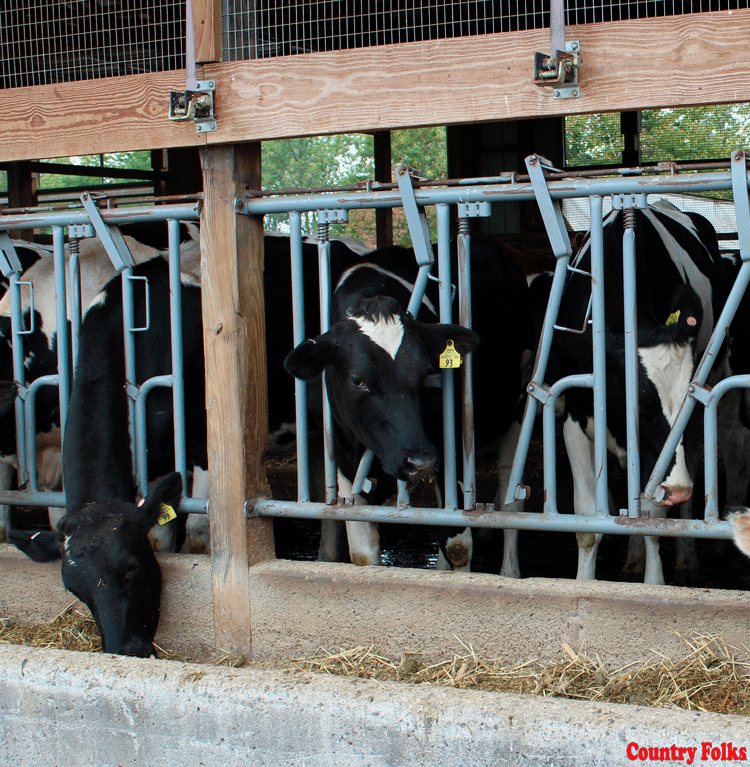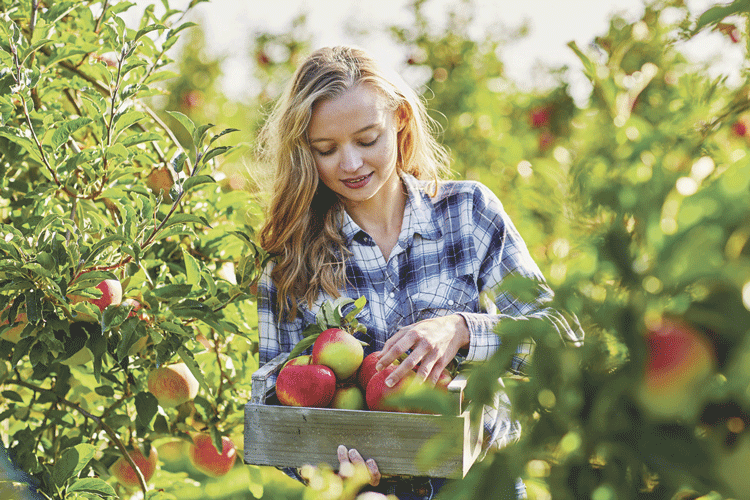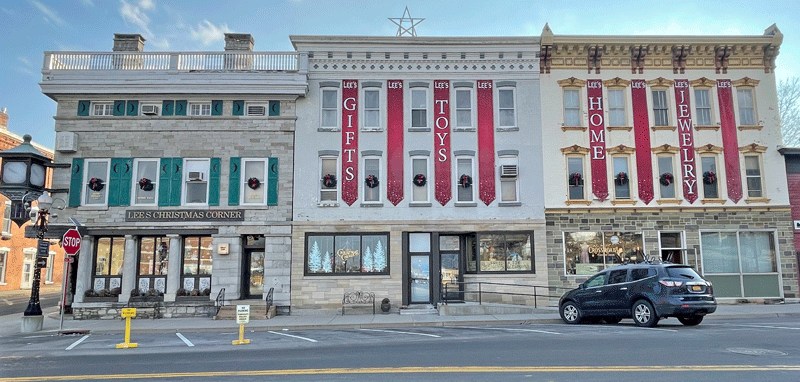 by Lisa Halvorsen, Freelance Agricultural Journalist for UVM Extension
by Lisa Halvorsen, Freelance Agricultural Journalist for UVM Extension
In an era when many farmers are going bigger to survive, Mike and Heidi Dolloff have kept cow numbers and milk quality consistent, which helps ensure their 160-cow Holstein farm in Springfield, VT, remains both sustainable and profitable. They pay meticulous attention to detail, whether in selection of herd genetics or improving crop yields or cow comfort, never losing sight of their goal to keep this a viable family farm they can pass onto the next generation.
Their strong, independent work ethic combined with a passion for dairying has led to success for this Windsor County farm. And, most recently, to its recognition as the 2014 Vermont Dairy Farm of the Year.
Since 1961, this coveted award has been presented annually to an outstanding dairy farm by University of Vermont (UVM) Extension and the Vermont Dairy Industry Association, in cooperation with the New England Green Pastures Program. Nominated farms are evaluated on herd, pasture and crop management; production records; pasture quality; conservation practices and contributions to the dairy industry and the local community, among other criteria.
“They are a testament that small 80-cow dairies can not only survive in Vermont, but be profitable as well if they are as well-managed as this farm,” says Tony Kitsos, state coordinator for UVM Extension’s Farm Viability Enhancement Program and coordinator for this awards program. “The judges were particularly impressed with how well they had built their assets up in just 17 years.”
In September, the Dolloffs will head to Eastern States Exposition in West Springfield, MA, to give a presentation about their operation and be recognized along with the five other New England state winners. They also will be honored at the Vermont Farm Show in Essex Junction, VT, next January.
Both Mike and Heidi grew up on dairy farms in New Hampshire. Their mothers went to college together, and Mike later worked on Heidi’s mother’s farm in Putney, VT. When that 300-cow farm was auctioned off in 1997, the couple, who managed their own small herd on the farm, chose not to sell their 30 head but rather to start their own dairying operation, which they named Dolloff Acres Farm. They bought a 102-acre property that had stood empty since the previous owner sold off his herd through the whole-herd dairy buyout program in 1986. They faced numerous challenges, including bringing the existing barn and milking parlor up to code as well as constructing additional animal housing and bunker silos.
The Dolloffs currently milk 80 cows on a twice-daily milking schedule in a double-five herringbone parlor, selling their milk to the Dairy Farmers of America (DFA) Cooperative. Their rolling herd average is an impressive 24,000 pounds, which can be attributed to excellent herd management practices along with quality feed and selective breeding.
“Getting 75 pounds of milk per cow with 4.3 percent butterfat and 3.2 percent protein while only feeding 18 pounds of grain speaks worlds for the genetics they have in their herd,” Kitsos notes.
Sue Isham, Region Manager for DFA agrees, noting that “the Dolloffs pay close attention to genetics and are very proud of their beautiful Holsteins. Year after year they achieve DFA’s highest quality award. They have created a well-producing herd and make excellent quality milk.”
The farm consistently earns DFA’s top-tier quality premium, providing an additional 60 cents per hundredweight to the milk check. They’ve also received Vermont Dairy Herd Improvement Association awards for somatic cell counts and production. Their herd’s somatic cell count is in the 95,000 to 100,000 range. The couple raises all their own replacements for their registered Holstein herd, using top bulls through artificial insemination.
“Mike does all the breeding,” Heidi says. “We run 30 to 40 bulls in the tank to have a huge selection.”
“She picks the bulls out,” her husband says, noting that this is just one example of the teamwork that he believes is the main reason for their success. “We pay attention to detail, and put in the extra effort, but our ability to work together well goes hand in hand with running a good farm. I am one step ahead of her, as she is with me.”
Heidi Dolloff notes that they strive for a 13-month calving interval, breeding their heifers to calve at around 23 to 24 months. To get calves off to a healthy start, they are raised in hutches until about three months old then moved into the 100-by-40-foot barn and divided into small groups. The 48-by-230-foot main barn houses the milk cows, dry cows and close-up heifers plus the milking facility.
“The milking herd is fed a total mixed ration twice daily,” Heidi Dolloff says. “Heifers are fed haylage and an 18-percent heifer pellet purchased from Poulin Grain in Newport. The babies are fed milk until I wean them to water, grain and hay at about eight to 10 weeks old, depending on the calf.
“There was no heifer facility when we first moved here, so we kept our heifers in a tie-stall barn on a neighbor’s farm just down the road.” The farmers built the new facility 10 years ago, handling much of the work themselves. According to Kitsos, “they built their barn for just $40,000, a testament to their strong heifer replacement program.”
Although Mike and Heidi have handled the day in and day out chores for years, this past fall they hired a full-time employee, Joey Leining, to assist with everyday chores and crop work. D.J. Belt, a family friend, has worked with the couple every Saturday for more than 10 years as well as helped feed the cows this past winter when Mike was laid up from shoulder surgery. Heidi’s brother, Brian Forst, has worked on many building projects on the farm over the years and done some crop work. Through good crop management practices that include regular soil testing, crop rotation and a well-managed manure program, the Dolloffs are able to raise most of their own feed for their herd, supplementing with purchased grain.
“They work closely with Tom Beaudry to assure that they are making the best use of on-farm nutrients,” says Isham, who nominated the farm for this award. “They routinely pull soil samples to be tested and also test the nutrient levels in the manure pit so they can apply the correct amounts of manure on the fields that need it.” Beaudry, an agricultural consultant from Walpole, NH, developed a comprehensive nutrient management plan for the farm.
They work with Dairy Nutrition Specialist Diane Norris from Poulin Grain in Newport to balance the feed ration for high milk production and proper body condition, ensuring that the animals are receiving optimal nutrition. Cows are fed a total mixed ration with a 70 percent forages to concentrate ratio.
Despite the rollercoaster ride dairying can be, the dairy farmers remain optimistic about their farm’s future and farming overall. As recipients of the Vermont Dairy Farm of the Year award, they will serve as dairy industry ambassadors, a role they already play through their many volunteer commitments.
Both have actively promoted dairying at the Windsor County Fair, and Heidi has taken on several leadership positions in organizations including serving as a DFA delegate and a director and secretary for the New England Dairy Promotion Board. She currently serves as president of the Windsor County Farm Bureau and was named county Farm Bureau Woman of the Year in 2008. In addition, the farmers have invited school groups to visit the farm. Heidi plans to start a 4-H dairy club in the coming year.
“To be successful, you need to have that love for the cows,” Mike Dolloff concludes. “The cows come first. If you don’t do a good job with them, the crops and all the rest don’t matter. It’s a hard life. Dairying needs to be in your blood. You need to love it.”









Leave A Comment